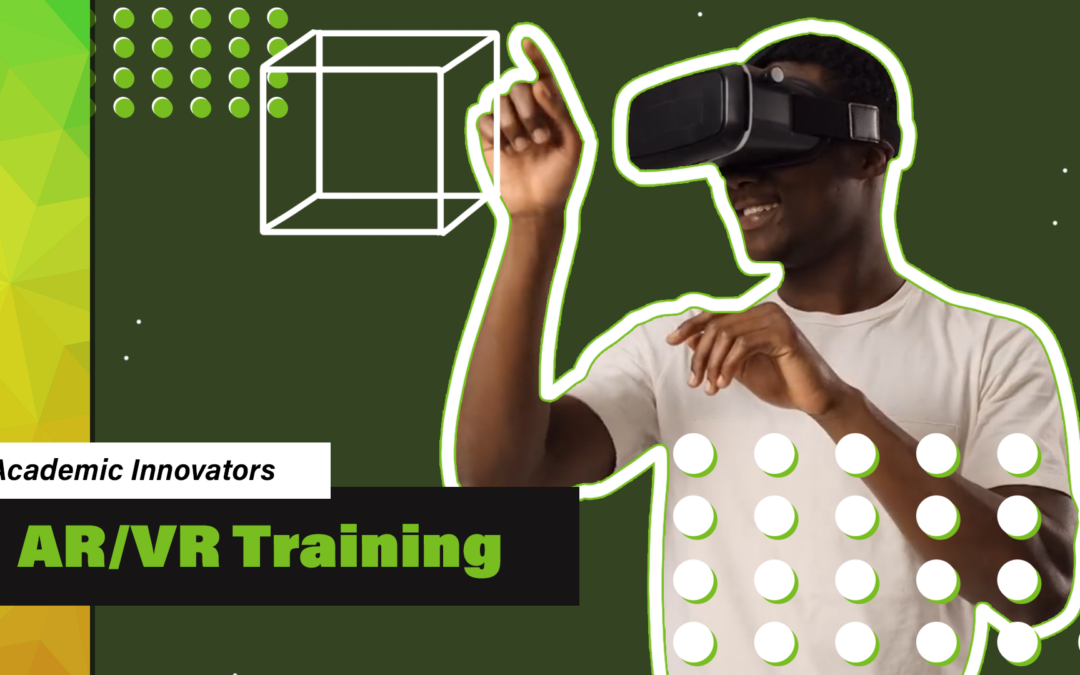Under the leadership of Steven Ayer, Associate Professor of Sustainable Engineering and the Built Environment, a groundbreaking teaching innovation has come to life; where augmented and virtual reality meet engineering education to provide students with accessible, multidimensional, and cost-efficient learning experiences.
Augmented & Virtual Reality Potential

Speed and efficiency are coveted virtues in every field, and this is especially true for engineers in their constant pursuit of optimization. However, the quest for expeditious and streamlined building construction methods presents a unique challenge. As the landscape of education evolves with the increasing prevalence of AR (augmented reality) and VR (virtual reality) technology, a transformative potential emerges: the ability to revolutionize construction visualization and enhance the efficiency of safety training for aspiring construction engineers.
Recognizing the potential of these technologies, Ayer began to create simulations for his students aimed at improving their learning outcomes through quicker comprehension, more engaging educational experiences, and a deeper understanding of the intricacies of their craft.
AR Construction Training Innovation

Utilizing a construction process known as ‘building information modeling’ (BIM), Ayer harnessed the capabilities of AR technology to introduce a game-changing learning strategy. With their cell phone cameras, students gain access to a virtual rendition of a structure that also has the intelligence to know how each part of it functions. For example, the software knows what a door is and the properties of that door.
The virtual environment brings architectural components to life, understanding each facet’s purpose and attributes. This immersive and interactive learning approach fosters a profound understanding of classroom material, enabling students to grasp concepts more vividly. Students are then tasked with building a structure. According to Ayer’s research, the results are compelling: the construction process is expedited by half the usual time, while errors are drastically reduced by an impressive 75%. These outcomes prove the transformative potential of mixed reality technology, affirming its capability to enhance safety learning within the architecture, engineering, and construction fields.
VR Safety Training Innovation
 Building upon his exploration into augmented reality to enhance construction education, Ayer is also spearheading a revolution in construction safety training, where immersive virtual reality (VR) and haptic technology converge to redefine how learners engage with critical safety practices.
Building upon his exploration into augmented reality to enhance construction education, Ayer is also spearheading a revolution in construction safety training, where immersive virtual reality (VR) and haptic technology converge to redefine how learners engage with critical safety practices.
Reflecting back on his early teaching days at ASU, Ayer recalls industry professionals speaking to his students and sharing a common refrain: “I never cared about safety, until…” These visiting experts would all recount similar stories of unfortunate accidents or injuries that catalyzed their concern for safety.
“Safety training is a necessity,” Ayer asserts. “We lose about a thousand people a year to preventable construction deaths.” Partnered with ASU student programmers and developers, Ayer embarked on a journey to reshape construction site safety education in ASU Engineering courses. Under Ayer’s direction, the students developed immersive simulations, crafting virtual construction sites that become grounds for real-world experience. Empowering students with VR headsets and haptic suits, these simulations offer a nuanced approach to safety training. When a student inadvertently overlooks one of the many potential hazards on the virtual worksite, the haptic suit springs to life, delivering subtle vibrations that mimic the consequences of their oversight.

In Ayer’s creation, the traditional classroom transforms into an arena of proactive learning, where students don’t just grasp safety protocols – they feel them. The result is an educational experience that transcends typical lectures and textbooks, elevating safety training to a realm of engagement, empathy, and lasting impact. Within this virtual site, students have the liberty to explore and experiment in an environment that is not only cost-effective and secure, but also alleviates the physical demands of real work sites.
Ayer’s innovation isn’t just technical; it’s a blend of psychology and education. By evoking a psychological impact akin to the intensity of a suspenseful movie scene, Ayer’s simulations create a dynamic learning environment that engages students on a profound level. The reaction is similar to being suddenly tapped on your back during a scary movie’s climax, the simulations are designed to elicit responses that resonate deep within learners. This blend of immersive technology and pedagogical insight leads to experiential learning, where the synergy between technological advancements and psychological triggers cultivates a safety-conscious mindset among future construction professionals.
This article and video are part of a faculty spotlight series, Academic Innovators, that provides recognition and insight for the inspirational work and research being done in the FSE community. Please consider nominating a faculty member to be featured.

